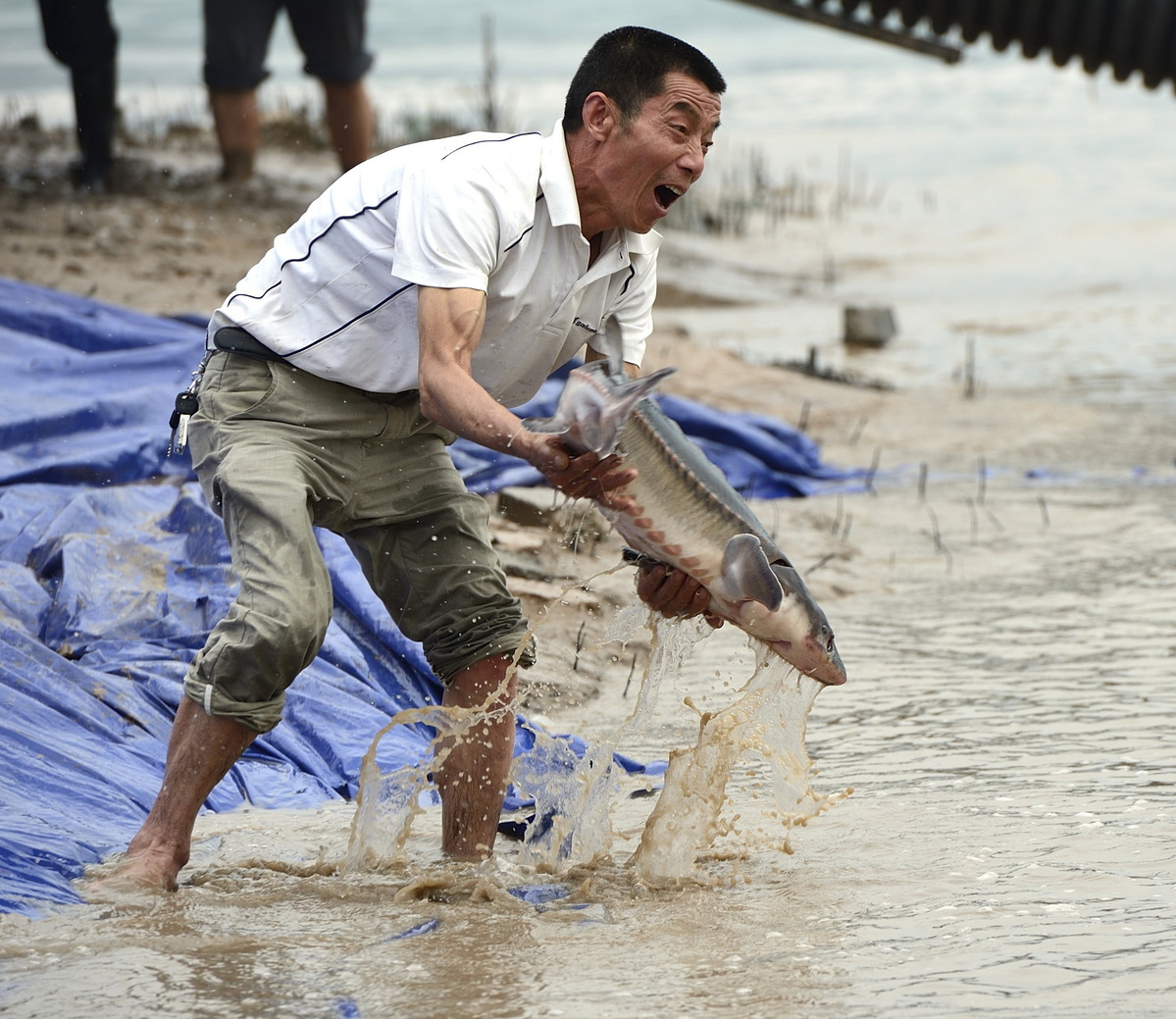Sturgeon gets reprieve from extinction


Research institute helps species breed artificially to replenish its population
Dabry's sturgeon - an endangered species of fish in the Yangtze River - may be able to head off extinction through artificial propagation, experts said recently.
A top-level protected fish in China, the Dabry's sturgeon lost its natural ability to breed due to water pollution, overfishing and habitat loss, according to Li Zhiyuan, deputy director of the Chinese Sturgeon Research Institute of China Three Gorges Corp.
The institute has led the effort to breed and restock the fish. In a recent experiment conducted on 20 females and four males, about 50,000 baby fish were successfully bred.
"Those babies are in extremely good condition," Li said on Thursday. "The experiment means that the species can be aided by complete artificial propagation, which will possibly save them from extinction."
Dabry's sturgeon, also called Yangtze sturgeon, is a species in the Acipenseridae family. An adult weighs around 10 kilograms with a length of about 1.3 meters.
Two other species in the Yangtze - the Chinese sturgeon, which is five times heavier, and the Chinese paddlefish - are also on the country's protected list. There have been no sightings of the latter in the wild since 2003.
Currently, all three species are on the International Union for Conservation of Nature's Red List of Threatened Species.
The Chinese Sturgeon Research Institute has conducted captive breeding with the Chinese sturgeon since 1982. The research team successfully achieved "complete artificial propagation" of the species in 2009, and artificial restocking of the Dabry's sturgeon kicked off in 2011.
The term refers to the process in which captive-bred fish are capable of creating a new generation through artificial technology.
Li said the biggest challenge in the process is fertilizing female fish in a simulated environment.
"A natural river is a very complex and diverse system. Some fish will die immediately once taken out of the water. The sturgeon is of this kind, and so far we have not figured out the reason," Li said.
He said the research team simulated natural conditions by adjusting water temperature and creating a pond that allowed the sturgeon to spawn.
Last month, the institute released 330,000 fertilized Dabry's sturgeon eggs in Yichang, Hubei province. Nearly 20 percent of those eggs hatched.
"The success of this experiment is a breakthrough and is expected to contribute to saving other fish whose populations are declining," Li said.
The sturgeon are often called living fossils because of their prehistoric appearance and ancient roots. They can live for up to 100 years and do not reproduce annually, which means they take many years to recover from any population declines.
In May last year, the Ministry of Agriculture and Rural Affairs released an action plan aiming to save the population of Dabry's sturgeon through artificial restocking over the next 18 years.
Zhou Lihua in Wuhan contributed to this story.
- History of traditional Chinese medicine on display at Shanghai museum
- Tianjin Hospital hosts Malaysian orthopedic experts to deepen China-ASEAN medical exchange
- How China aims to reach 80-year average life expectancy by 2030
- Home visits and WeChat platform aid Ningxia patients
- PBOC fast-tracks Hong Kong fire donations
- Hong Kong mourns victims of devastating Tai Po fire




































